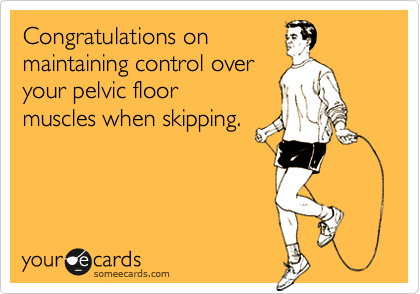Baby Bumps and Barbells - Postpartum
Jul 27, 2016
Previously, we talked about safe exercise during your pregnancy. But how do you know when and
where to start after having your baby? As always, consult your doctor before beginning an exercise
program. Complications during labor or other factors, such as diastasis recti, can change your return-to-exercise timeline.
Before I list a few suggestions for exercise, it’s important to review the guidelines:
Protect your joints- effects of the hormone relaxin can last up to six months postpartum. Your
ligaments will have more laxity and range of motion will be increased. It is important that you
control your movement throughout the entire range and avoid loading your joints at the end
range. An example that I use a lot is crashing into the bottom of a squat—avoid that! Mobility
exercises, specifically distraction, with bands should not be used directly after pregnancy and added conservatively after a few months.
Ease into exercise- you may find that beginning with low impact exercise is more comfortable,
such as swimming, biking, light weight training. Just as during your pregnancy, listen to your
body and avoid going to exhaustion right out of the gates.
Stay hydrated- especially if breast feeding, it is important to remain hydrated. The
cardiovascular changes that took place during pregnancy will begin to level off. So drinking
plenty of water and maintaining electrolyte levels is important for the health of you and your
child!
Mind your belly- diastasis recti is the separation of your abdominal muscles during pregnancy.
Depending on the amount of separation, different exercises should be avoided. Not all women
experience diastasis recti but it important that you communicate with your care provider to
determine if it affects you. If so, abdominal crunches, planks and sit-up variations should be
avoided until it is healing and closed to a certain degree.
Pelvic floor health- many factors during the pregnancy will make your pelvic floor vulnerable to
dysfunction: pressure from the baby, altered posture during the pregnancy, episiotomy or
spontaneous laceration, vaginal delivery. It is important to check in with your pelvic floor and
decide if it needs some attention before returning to exercise. Pelvic floor dysfunction can lead
to a slew of issues; three very common issues are urinary stress incontinence (peeing when you
sneeze, jump, etc), low back/hip pain and painful intercourse. If any of these issues persist, see
a pelvic floor physical therapist and they can get you back on track. These are all common but
not normal.

Keeping the guidelines in mind, work through these exercises and find your weaknesses.
Hollow Rock Regression- this exercise is great to begin to regain midline control. Do not do this if you have diastasis recti.
Air Squat- slow and steady, controlling your speed on the descent. If you are having hard time with
control, squat to a box!
Monster Walks- the deep rotators of the hip have fascial connections with the pelvic floor so they
directly impact its function.
Diaphragm Reset- it is important to practice breathing with proper posture- ribs over hips. In the later stages of pregnancy, the exaggerated lumbar lordosis (sway back) puts your diaphragm at a
disadvantage.
Starting with these foundational exercises will make your transition back to higher level exercise as seamless as possible. Keep those precautions in mind and communicate with your healthcare provider if you have any questions. If pelvic floor dysfunction seems to be sticking around, seek out a pelvic floor therapist. This is something that can be treated and resolved!
Thanks for reading,
Dr. Jackie, PT, DPT, CSCS
Photos:
http://www.someecards.com/usercards/viewcard/a2679791515bfaa20529fedf7844268414
Let us help you figure out to live your best active life today!
Remember, Movement is Medicine!

